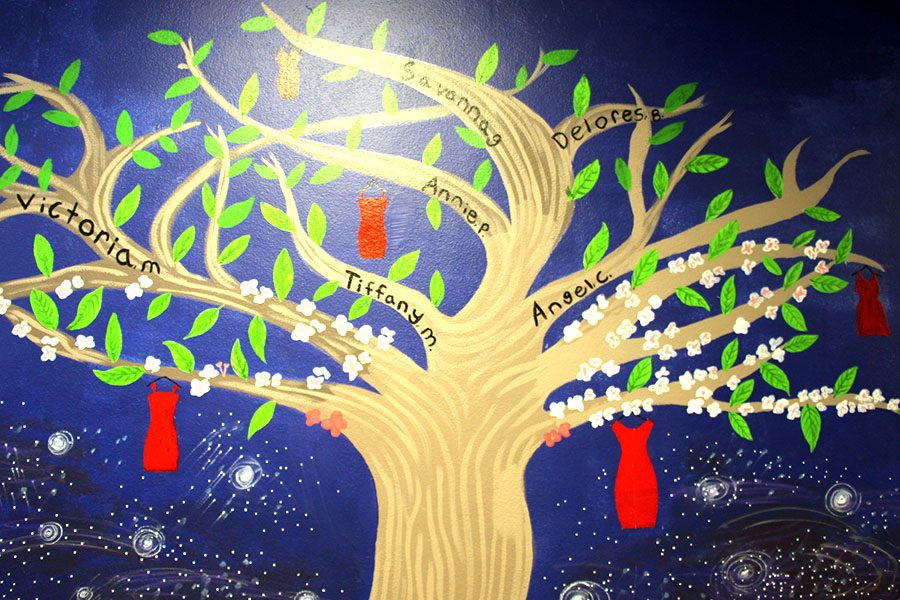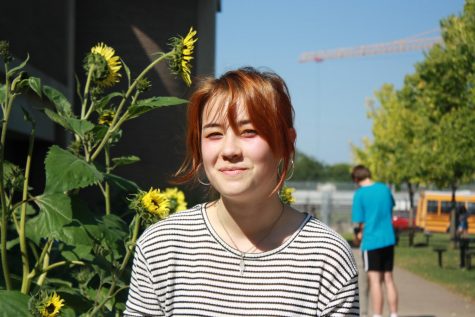The pressure to protect Native women in the US continues to grow
As of January 9th, 43 South seniors applied to all-women’s colleges out of the 59% that applied to any college. While all-women’s colleges were initially the only option for women, they now serve a different purpose in the time of co-educational college. Graphic: Oliver Hall
March 26, 2018
Native women and girls are going missing all over the United States, but disappearances are particularly concentrated in the North. Some of these women are found and brought back to their families, while others are still missing or found dead. This issue is referred to as Murdered and Missing Indigenous Women, or MMIW. Keep in mind that this is not a new issue. MMIW is something that has been happening for centuries but only recently has it become more visible to the public.
Canada has recently recognized in the past few years that the thousands of missing and murdered indigenous women is in fact an issue. In response to this issue the Government of Canada has launched the National Inquiry into Missing and Murdered Indigenous Women and Girls (MMIWG).
According to MMIWG the inquiry is meant to, “examine and report on the systemic causes of all forms of violence against Indigenous women and girls in Canada by looking at patterns and underlying factors.” Though some may see this is as progress, the Native community in Canada was upset that nothing was done to prevent or restrict this issue from continuing.
““We have lost confidence in the national inquiry,” Hilda Anderson-Pryz, whose sister Dawn died under mysterious circumstances in 2011, told reporters. “We’re being left out and not being heard by the national inquiry. We all agree that we cannot dishonor our loved ones and ourselves by participating in a flawed process,”” according to theguardian.com.
Meanwhile in the United States this issue is still awaiting recognition from the government in order to ensure that Native women feel protected and safe. South High math teacher Kassie Benjamin says that, “of all the issues and all the actions that are taking place in Native communities this one is the most difficult one to talk about.”
She explained that this issue is very personal. Benjamin has family members that have gone missing, and as a teacher she said that she has seen how the issue impacts her students too. “[This issue is] the most difficult one to even… wrap my head around,” said Benjamin.
Lecia Mata is a senior at South that has lost one of her family members, but she says her family doesn’t really discuss it. Even though she is not affected by the emotional impact of loss as greatly as those who have close ones missing, she is affected by the issue because she is aware that as a Native women she has a higher chance of experiencing violence.
Mata explained that she tries to stay safe by trying not to look like a target. “My mom is always telling me to look appropriate. I think I’ve always struggled with that; wondering if I’m always covered enough… I’m always conflicted when I go out if I’m safe and if I’m doing enough to protect myself,” said Mata.
Native women have a higher chance of experiencing interracial violence, sexual violence, intimate partner violence, and domestic violence than other ethnicities.
At least 70% of violence Natives experience are caused by someone of a different race, according to the Bureau of Justice Statistics, US Department of Justice, Office of Justice Programs. The US Department of Justice also found that Native women are more than 2.5 times as likely of being sexually assaulted than any other race in the United States. A study conducted by the Center for Disease Control and Prevention found that 39% of the Native women they surveyed have claimed to have experienced intimate partner violence at some point in their life. This rate was higher than any of the other races that were surveyed. The National Network to End Domestic Violence found that Native women on reservations experience domestic violence and physical assault at higher rates than any other race.
Though this information may show that Native women are unsafe, when it comes to the Missing and Murdered Indigenous Women there is not any accurate data on just how many Native women have gone missing. “We need to have accurate data to look at and then be able to spread the awareness, so people understand; this is an epidemic,” said Benjamin.
Benjamin calls the issue alone, “very tragic [and] its traumatizing.” When the United States government does nothing to reach out to the Native community, it can not only hurt those who have lost loved ones but it even impacts those in the Native community that have been fortunate enough to not lose someone.
The silence of the United States government sends a negative message to the Native community. “It just makes us feel used and like we’re not important,” Mata continued, “just because we’re a smaller population doesn’t mean we don’t matter.”
Due to the absence of government support, the Native community and their allies have joined together to find alternative ways to combat this issue themselves. Benjamin explains that the Native community is very close so they recognize the issue, but outside of the community tends to be a different story. “First things first people need to see it, people need to understand it as a problem,” said Benjamin. “We want to spread awareness of the issue because so many people don’t even know.”
One of the several ways South High school is raising awareness of the issue is through art. In the All Nations wing, a small group of students painted a piece of a mural to recognize the murdered and missing indigenous women’s issue. The mural is of a large tree with names of just a few of Native women that have been lost. Gloria Olmeda was one of the South student muralists that made the piece. “The red dresses are to represent people that still want to get dresses for [the murdered or missing native women]. That whole tree was just to raise awareness… If more people are aware that people can be taken and can be endangered at anytime that they will… try to prevent it,” said Olmeda.
All over Minneapolis various scales of actions to raise awareness of the importance to protect Native women and girls has grown over the past few years. Protesters take to the streets, artists create powerful public art, and Native people all over are taking a stand to tell their story. “In order to try to heal it needs to stop happening. It needs to stop happening to our women. So that’s why we take action,” said Benjamin.






